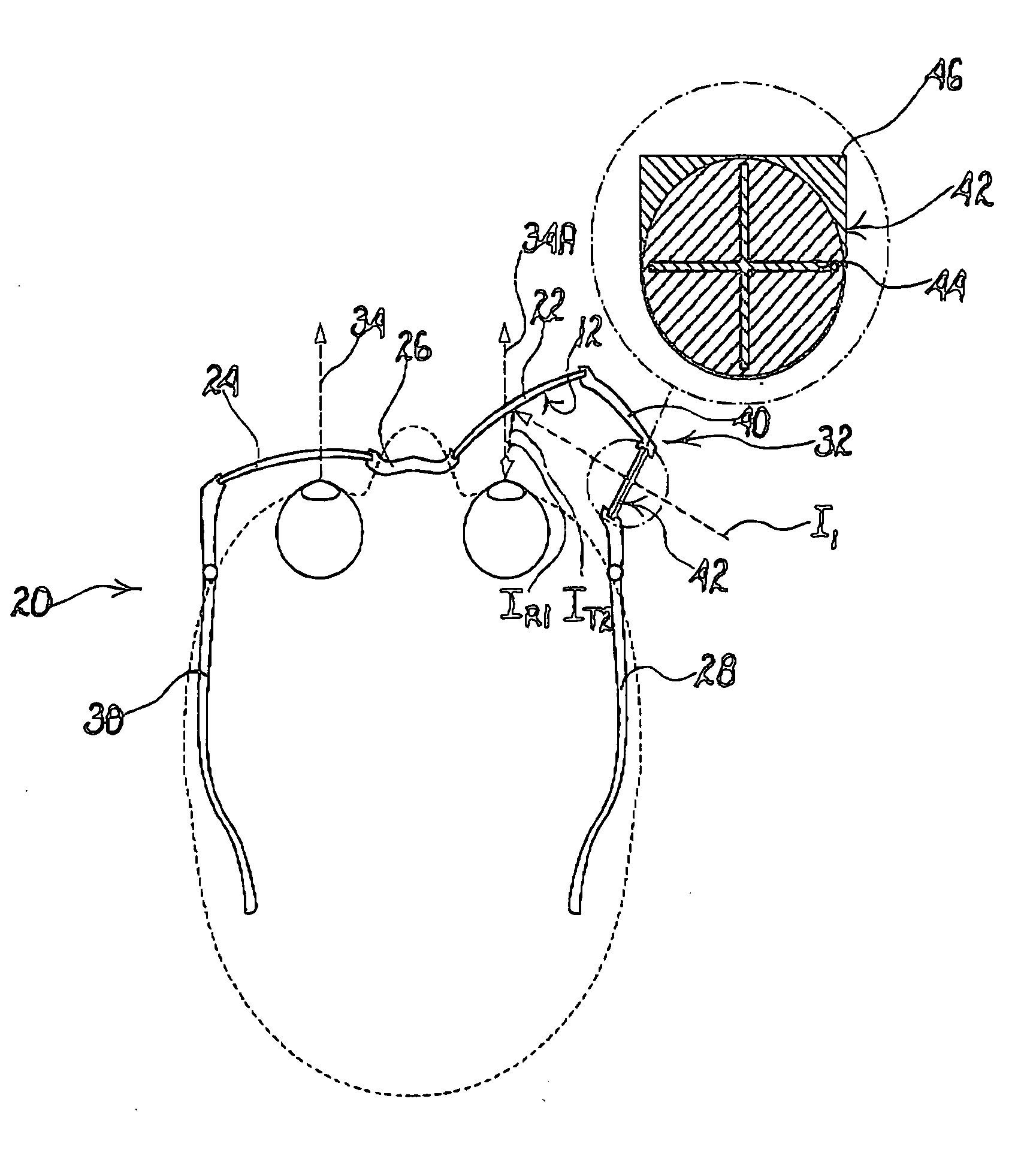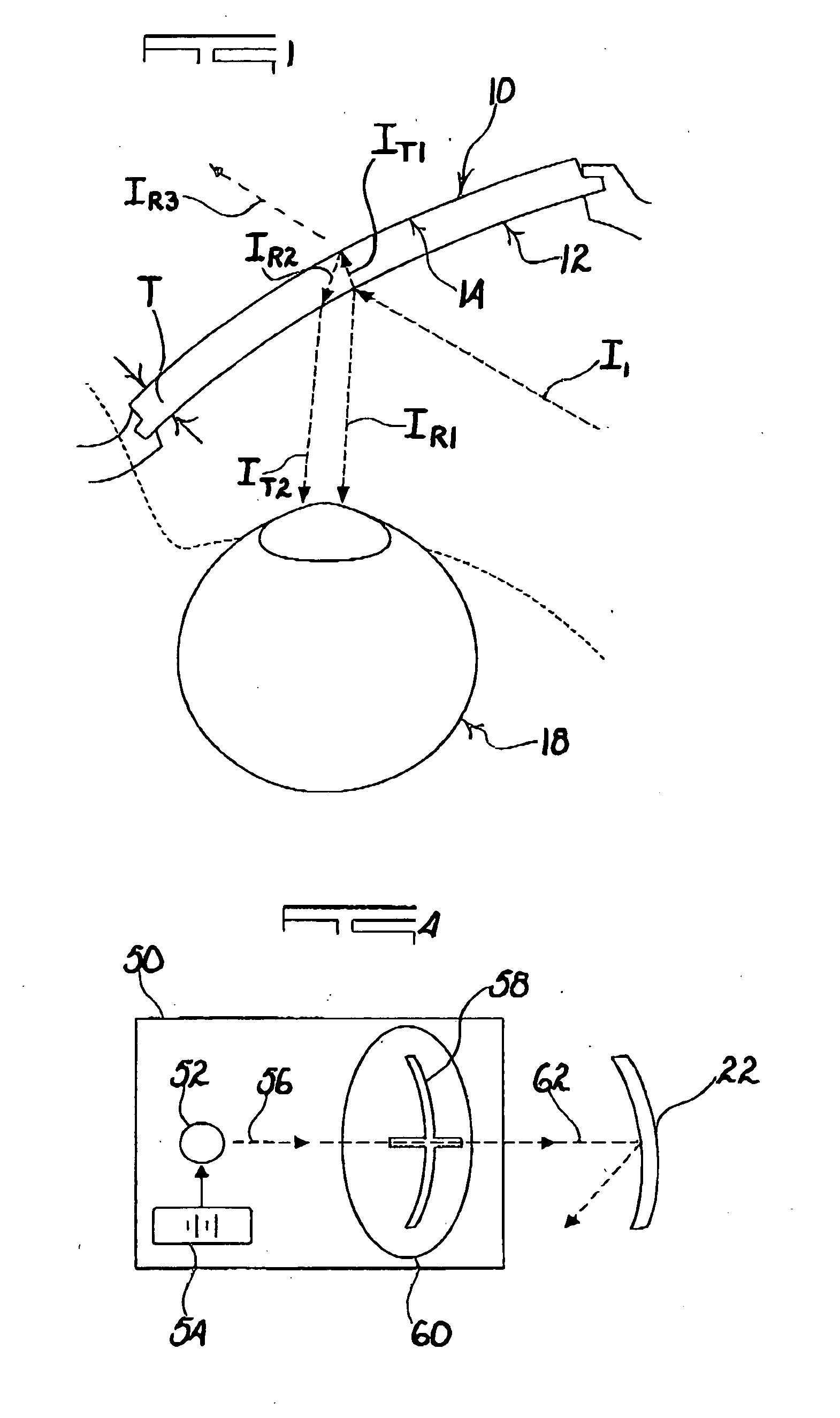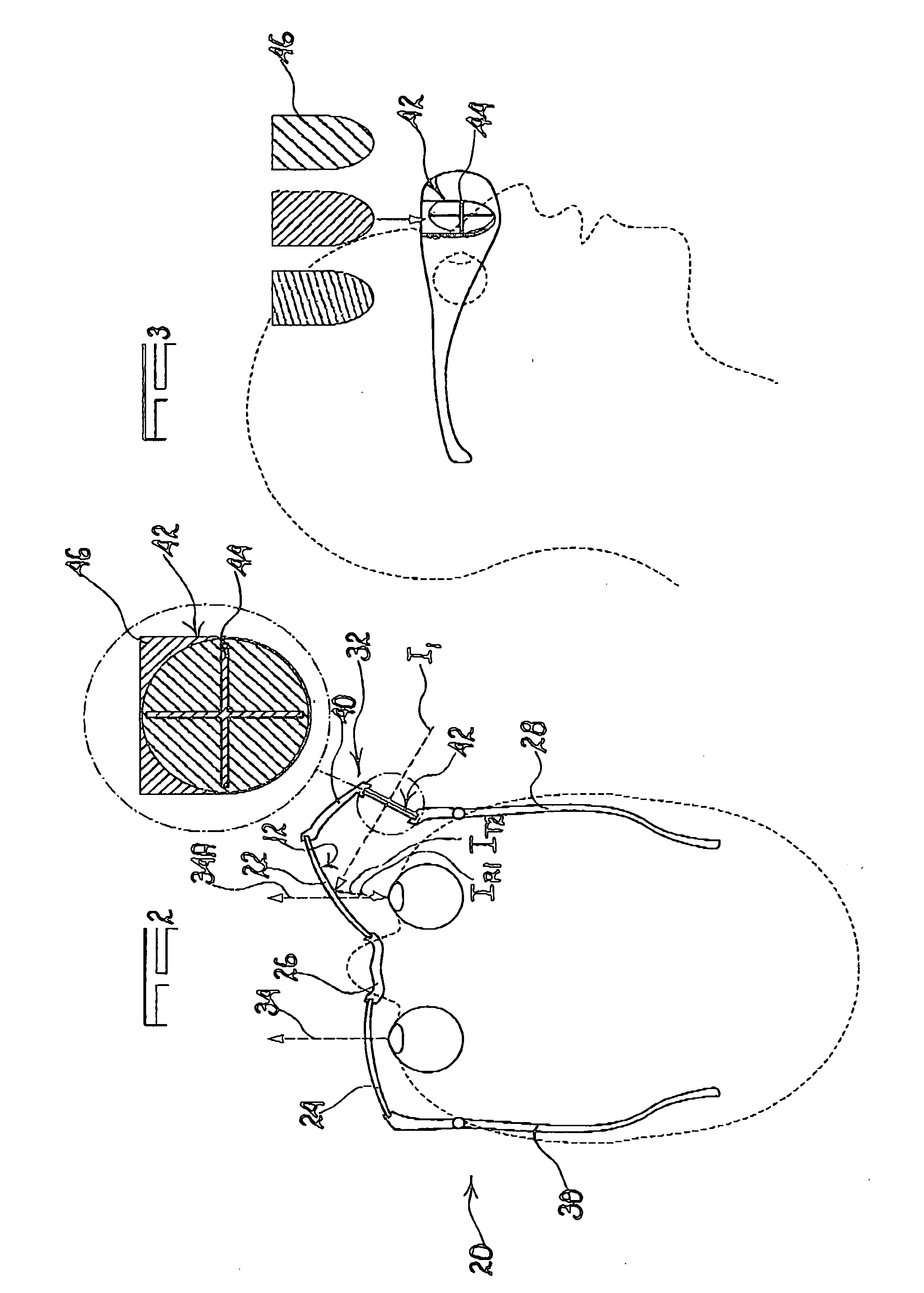Optical apparatus
- Summary
- Abstract
- Description
- Claims
- Application Information
AI Technical Summary
Benefits of technology
Problems solved by technology
Method used
Image
Examples
Embodiment Construction
[0029]FIG. 1 of the accompanying drawings illustrates in cross section a lens 10 used in the apparatus of the invention. The lens is made from a light transmissive material eg. glass or a plastic such as polycarbonate, and has an outer reflective surface 12 and an inner reflective surface 14. The lens material has an absorption index A and a reflective index n. The lens is of uniform thickness T, where T is preferably≦2 mm.
[0030]FIG. 1 illustrates an incident light ray I1 impinging on the outer reflective surface 12. The ray produces a first reflected ray IR1 and a refracted ray IT1. When the latter ray strikes the inner reflective surface 14 a ray IR2 is reflected internally and this is refracted at the interface of the outer surface 12 with atmosphere to produce a ray IT2. At the interface of the inner surface with atmosphere an outgoing refracted ray IR3 is produced.
[0031] A person viewing the rays arising from the outer surface 12 will thus see, with an eye 18, a first, main i...
PUM
 Login to View More
Login to View More Abstract
Description
Claims
Application Information
 Login to View More
Login to View More - R&D
- Intellectual Property
- Life Sciences
- Materials
- Tech Scout
- Unparalleled Data Quality
- Higher Quality Content
- 60% Fewer Hallucinations
Browse by: Latest US Patents, China's latest patents, Technical Efficacy Thesaurus, Application Domain, Technology Topic, Popular Technical Reports.
© 2025 PatSnap. All rights reserved.Legal|Privacy policy|Modern Slavery Act Transparency Statement|Sitemap|About US| Contact US: help@patsnap.com



